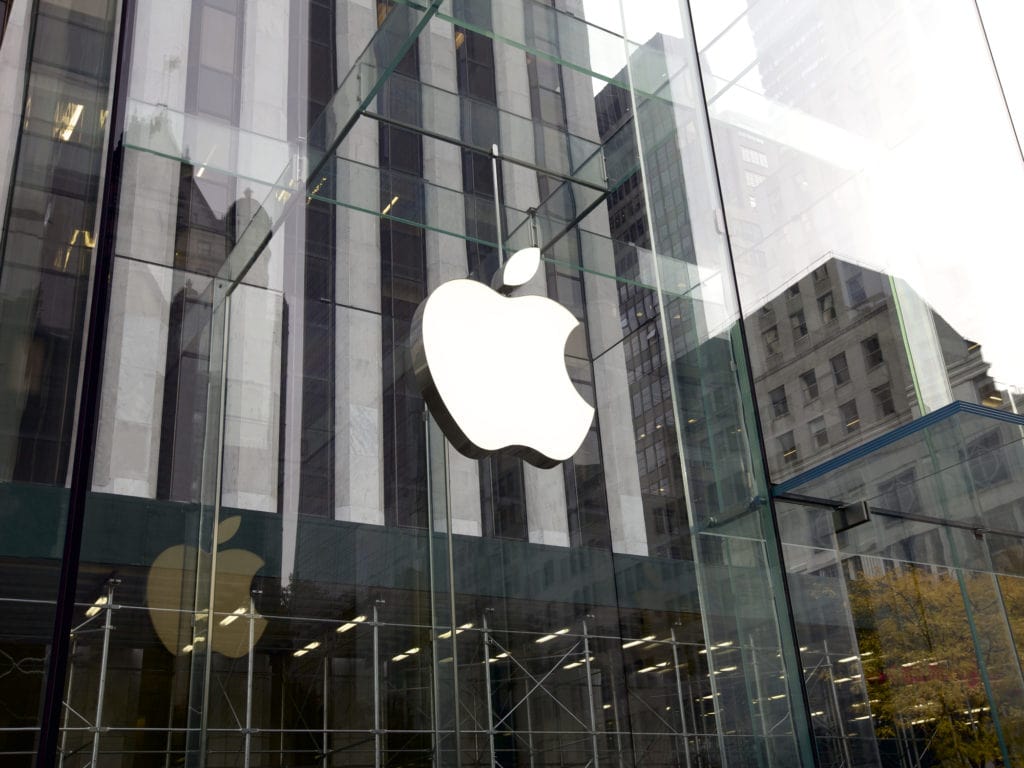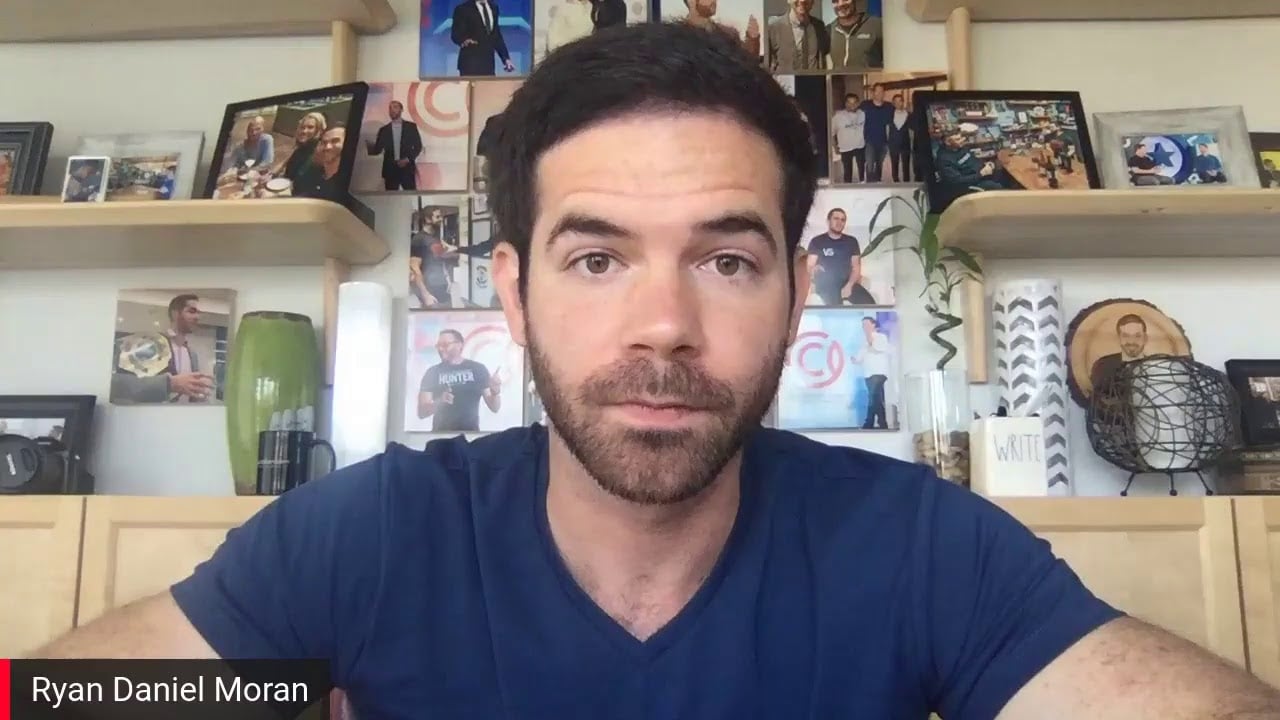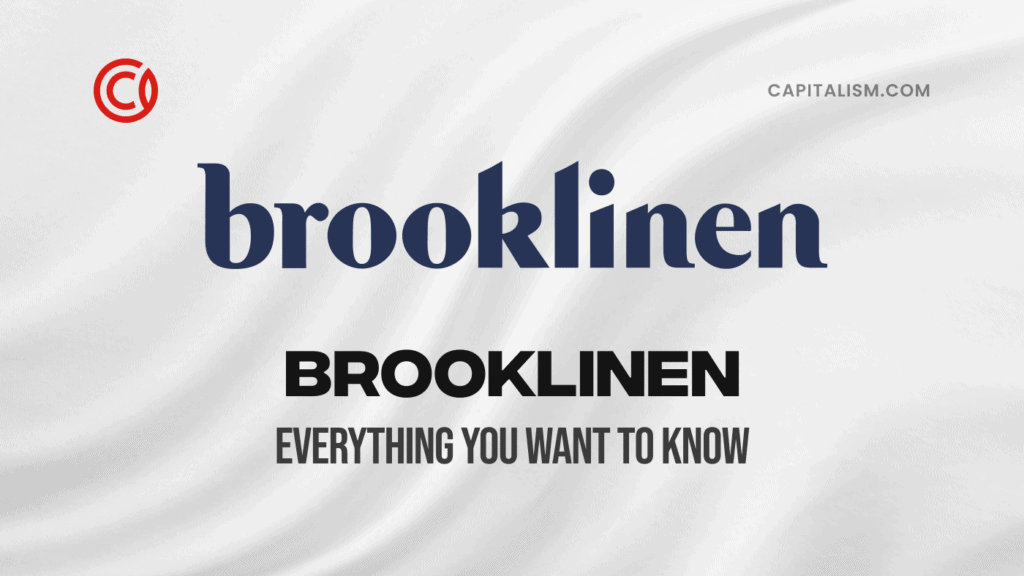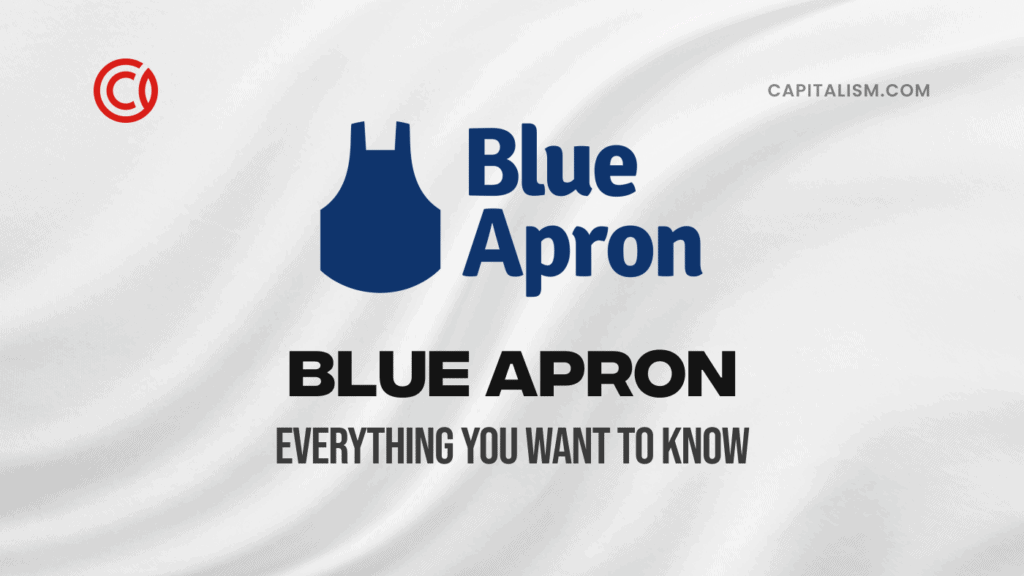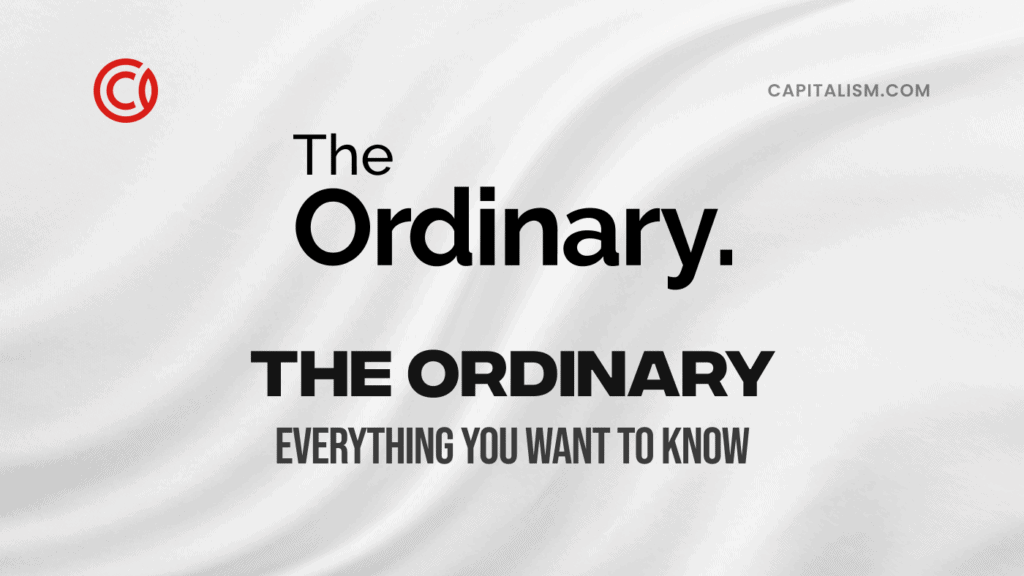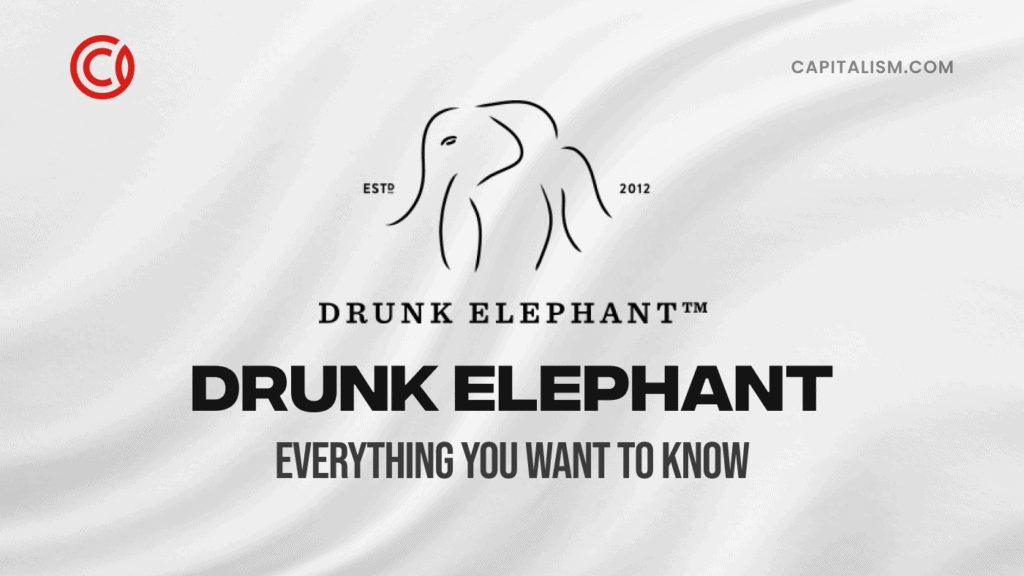Apple: Everything You Want to Know About This Multi-Trillion Dollar Company
Whenever someone mentions Apple, you probably don't envision a Granny Smith or Red Delicious. Instead, your mind immediately goes to the well-known tech giant. There's even a good chance you have an Apple product in your possession right now. And whether you prefer Android to iOS or Microsoft to Mac, there's a lot to admire about the rise of this seemingly untouchable company.
But how did a simple startup transform into one of the most successful companies of this generation? Let's travel back in time and learn about Apple Company history to find the answer.
Hey, Siri! Take us back to the launch of Apple.
But first, if trillions of dollars seems “impossible” to you, check this out:
1976: Humble Beginnings…in a Garage
Steve Jobs and Stephen Wozniak (Woz) officially launched Apple, then known as Apple Computer Company, on April 1, 1976, in Jobs' garage. Why Apple? As it turns out, Jobs spent a lot of time at an apple orchard, and he suggested the name to Woz. Jobs thought the name sounded "fun, spirited and not intimidating."
These two computer geeks have an unusual past. The University of Colorado Boulder expelled Woz for hacking into the school's computer system. Jobs only attended college for six months before dropping out.
However, the highly intelligent and innovative duo didn't need a college degree to create their first product. Woz originally designed circuit boards and tried to sell them to HP, but the company turned down his invention on several occasions. Jobs suggested they start a business together and build the circuit boards themselves.
These circuit boards became known as Apple I, but their first debut at a Palo Alto computer club didn't drive much attention. The general public just didn't see the need for circuit boards.
1977: The Rise of Personal Computing with Apple II
Just a year after a failed product launch, Jobs and Woz introduced Apple II to the public. It was the first personal computer with a plastic case and color graphics. The computer featured a 1MHz processor, 4KB of RAM, and even had a keyboard. It received mass-market success.
Apple II remained a top-selling hobbyist computer for several years. It sold over one million units in 1983 and was why Apple first landed on the Fortune 500 list the same year. This product made Apple the premier leader in personal computing.
1983: The Commercial Failure Known as Apple Lisa
Not everything touched by Jobs and Woz turned into gold. The introduction of Apple Lisa proved the general public wasn't always ready for bold innovation. Unlike Apple II, the duo designed Lisa with businesses in mind. It featured a graphical user interface (GUI) that many computers still use today.
Even though Lisa reached technical acclaim, the public didn't go wild for it. The $9,995 price tag probably didn't help. During its two years on the market, the company sold only 10,000 units.
1984: The Hype Surrounding the Macintosh Computer
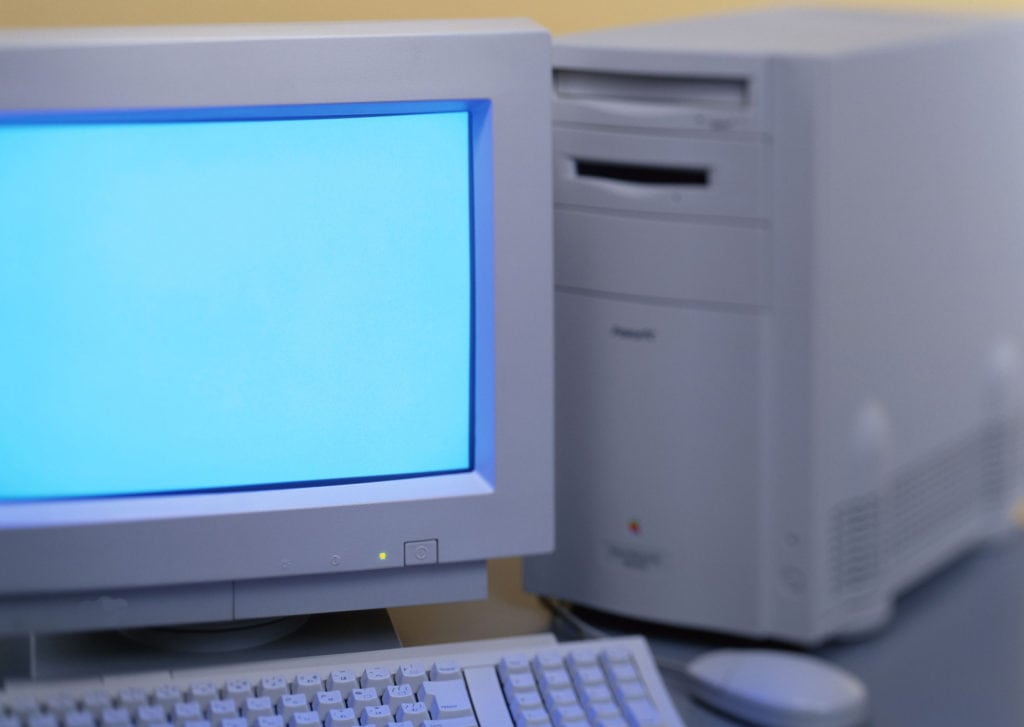
After brushing off Lisa's commercial failure, the company unveiled the highly anticipated Macintosh at the Flint Center in Cupertino. A 60-second, George Orwell-esque commercial during the Super Bowl hyped up the new computer before its launch.
In addition to featuring the same GUI as Lisa, the first Macintosh also had a built-in screen and a mouse. Moreover, the personal computer was stylish and smaller than previous models. Even though it was more expensive than some competing products, it gained a lot of notoriety with the public.
1985: The Firing of Steve Jobs
Can you really get fired from a company you founded? Apple did just that when the company fired Steve Jobs. But is "fired" the correct term? According to Jobs, yes. However, now ex-CEO John Scully and the board claim Jobs left voluntarily. Jobs had a reputation for being difficult to work with, and the company thought it would be best to part ways.
Instead of sulking, Jobs decided to co-found NeXT Computer. He also went on to purchase Pixar from Lucasfilm for a whopping $5 million. Funny enough, the company would later acquire NeXT for $400 million in 1996.
Without Jobs, the other execs went ahead and released a portable computer called PowerBook 100 in 1991 and the Newton Message Pad, a handheld device, in 1993. While the PowerBook was a hit, the Newton flopped.
1997: Welcome Back, Jobs
What's crazier than firing your company's founder? Hiring him back as CEO a decade later. That's just what Apple did with Jobs.
After Jobs left, the company went through its share of CEOs. None of them delivered the same results as Jobs. After acquiring NeXT Computer in 1996, Jobs was able to force out then-CEO Gil Amelio. It wasn't difficult to convince the board to demand Amelio's resignation since the company had record losses topping $1.8 billion.
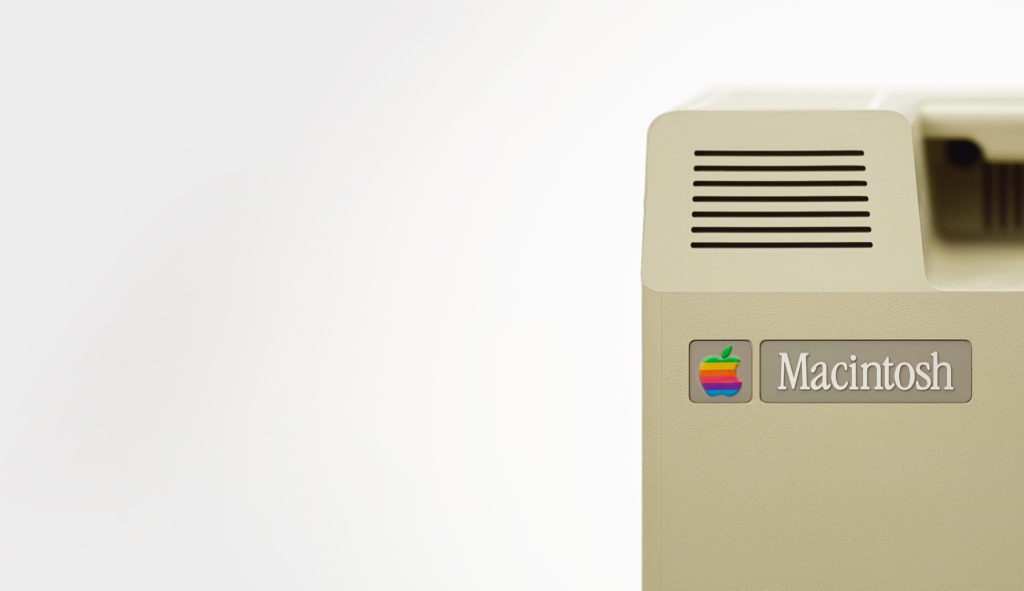
Jobs became the interim CEO after Amelio left. His main goal was to make the company he founded profitable once again. With Jobs behind the wheel, the company would release a series of epic products over the coming years.
1998: The Colorfully Aesthetic iMac
Personal computers were more popular than ever in the late 90s, but they all looked the same. Jobs decided to try something different when he helped design the colorful iMac. Unlike its gray and beige predecessors, the iMac featured a translucent case in various colors, including blueberry, grape, tangerine, lime, and strawberry. The fruit colors appropriately complimented the fruit-named company.
During its unveiling at Macworld, Jobs proclaimed, "iMac comes from the marriage of the excitement of the Internet with the simplicity of Macintosh." He cleverly launched his latest creation in August, right before the start of the new school year.
While the bright colors initially drew in excited buyers, the iMac was also a bit controversial in the tech world. Jobs decided to ditch the standard floppy disk drive in favor of CD storage and internet downloads. It seemed like an incredible risk at the time, but this unconventional move paid off in a big way.
The iMac was highly successful. It drew in a cult-like following. A little over two years later, Apple had sold an impressive 5 million units, quite possibly saving the company from bankruptcy.
2001: iTunes and the iPod Puts Music in the Palm of Your Hand
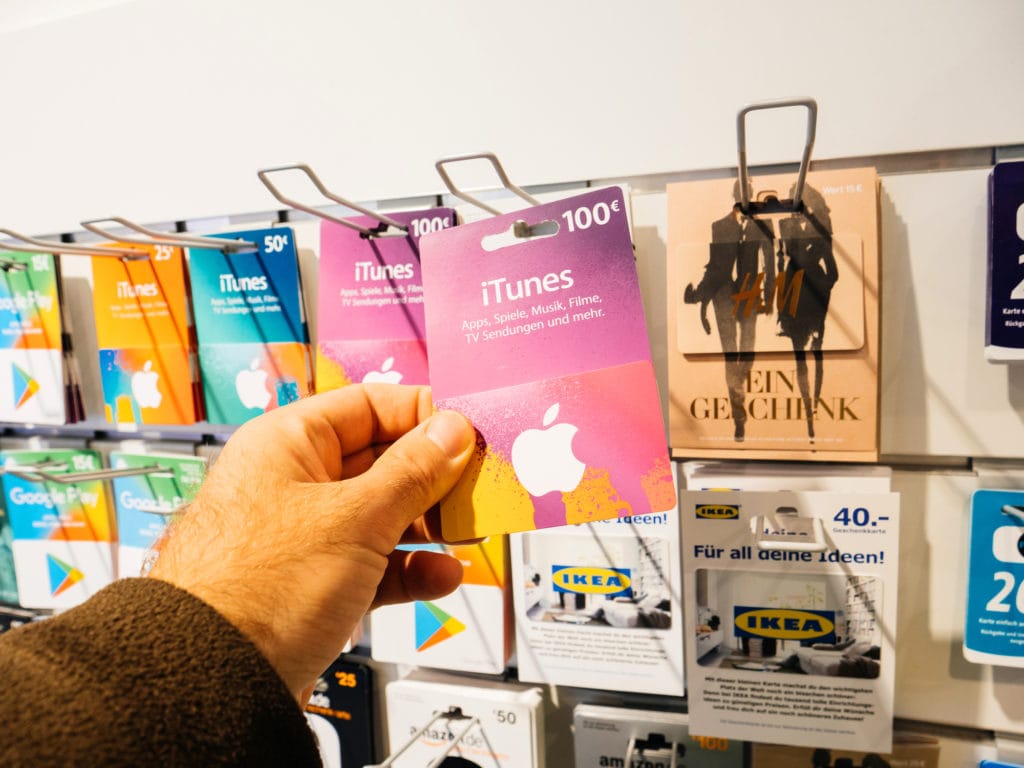
The dawn of a new century brought new product innovations to Apple. Instead of only producing computers, Jobs decided to branch out. In January, they released iTunes to consumers. Initially designed to be a media player and media library, iTunes made it possible to store digital copies of songs, albums, and other media types in one location.
Only a few months later, in May, the first Apple Store opened at Tysons Corner Center in McLean, VA. Within just a few days, over 7,700 customers visited the highly anticipated grand opening. In the following years, the company continued opening new locations. Today, there are 271 Apple Stores in the United States and even more across the globe.
In October of 2021, Apple launched the first iPod. Even though the iPod wasn't technically the first digital music player on the market, it quickly became the most popular. The iPod also drew more customers to standalone Stores, helping to boost sales on other products.
Although the iPod's success overshadowed their other innovations, the company also managed to release OS X during the same year. It combined the genius of NeXT software with the beauty of Apple designs. This revolutionary software would become a critical component in many later releases.
2003: iTunes Store Changes How People Buy Music
Internet downloads gained momentum by 2003, and Jobs took advantage of this craze by opening the iTunes Store. Consumers could visit the online store to download digital copies of music, movies, TV shows, and audiobooks. It quickly became the store-of-choice for new iPod users looking to fill their devices.
2007: iPhone Reinvents Mobile Phones
The 2007 Macworld Expo in San Francisco changed consumer electronics forever. It was here that Jobs revealed the iPhone to an eager audience. During his famous keynote speech, Jobs confidently stated, "We're going to reinvent the phone." And he was right.
The iPhone wasn't just another mobile phone—it offered much, much more. Jobs' invention combined a phone, a digital music player, and a computer into a single handheld device. Consumers were in awe. The iPhone launched in June and sold 270,000 units in two days. Before the company discontinued the first-generation model in 2008, it sold over 6.1 million units. Many other models would soon follow, with each one exceeding the sales of the previous generation.
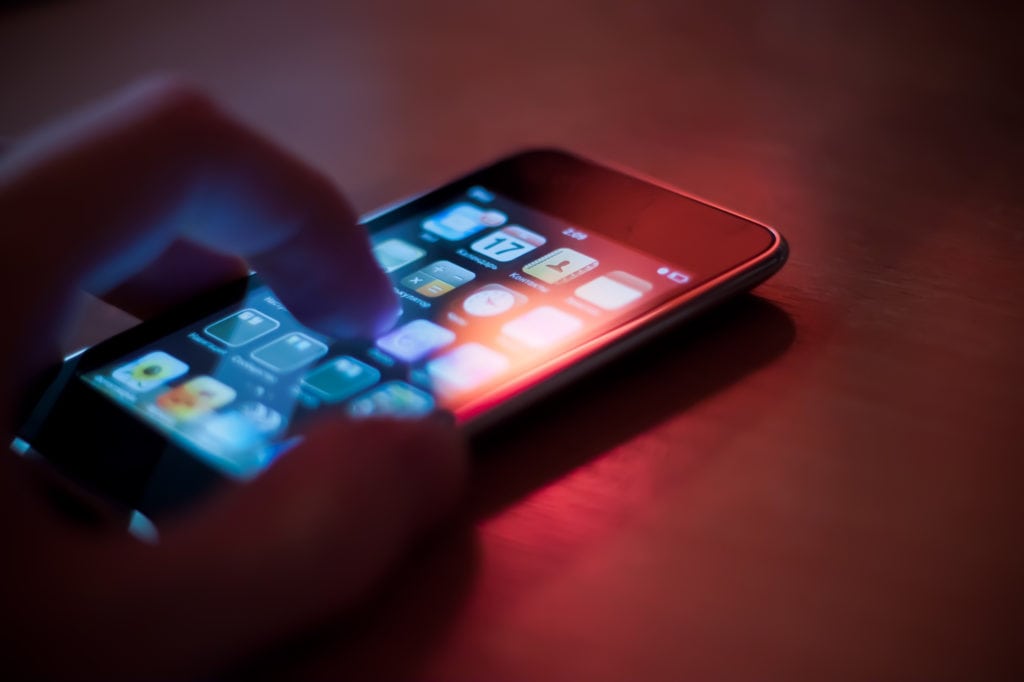
Jobs also introduced another exciting device to the product lineup during the same keynote presentation—the iPod Touch. Mistakenly called the iTouch by many, the iPod Touch featured some of the same touchscreen technology used in the iPhone.
2008: App Store Brings New Life to Apple Products
Apple quickly learned its iTunes store needed a facelift. Consumers wanted more technology at their fingertips, and the company wanted to compete against gaming systems. To keep with the times, Apple opened the App Store as an update to iTunes. The App Store featured 500 applications compatible with both the iPhone and iPod Touch. Today, the App Store has nearly 1.82 million apps, and developers continue to release new apps on a seemingly daily basis.
2010: iPad Streamlines Computing On-the-Go
The need for a lightweight, fully functional tablet led Jobs to create the iPad. The first iPad featured a 10-inch touchscreen and could connect to the internet via WiFi or cellular data. Jobs admitted he envisioned the iPad before inventing the iPhone. However, he launched the latter first because he saw a more significant need for a touchscreen phone.
The iPad was an instant success. The company sold over 12 million units by the end of the year and gained dominance in the growing tablet market.
2011: iPhone 4S, Virtual Assistant, and Death of a Legend
The iPhone 4S changed how people interacted with their mobile devices. This model introduced fans to a new voice-activated assistant known as Siri. Apple acquired Siri the previous year and spent 16 months perfecting its technology. Users could ask Siri to complete various tasks or answer a few questions without ever picking up the device.
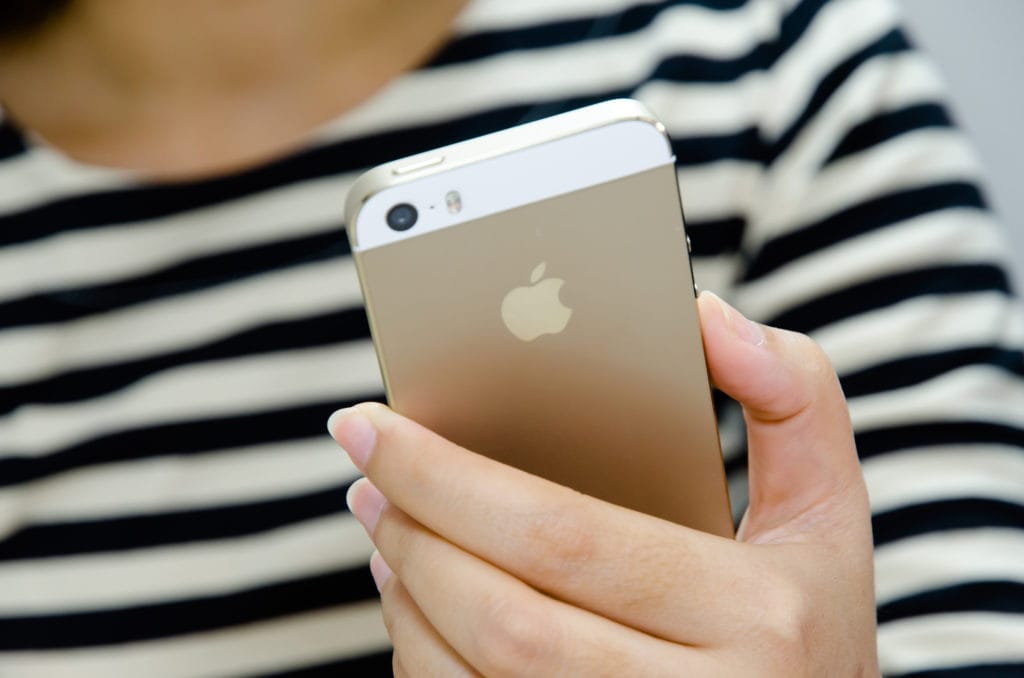
Jobs also announced we would step down as CEO in September of this year due to his deteriorating health. He named Tim Cook as the new CEO, and Jobs remained a chairman.
Cook unveiled the iPhone 4S on October 4. Sadly, on October 15, just one day after the announcement, Jobs succumbed to pancreatic cancer, leaving behind a legacy the world would never forget. His death didn't slow down the release, however. The critically acclaimed iPhone launched on October 14 and sold over 4 million units in just three days.
2014: Apple Watch Introduces a New Way to Tell Time
After Jobs' death, Apple releases came to a standstill under the company revealed the Apple Watch. This smartwatch not only told time, but it also integrated health-conscious functionality. Wearers could count their steps, monitor calorie intake, and track their heartbeat at a glance.
The Apple Watch didn't gain as much momentum as hoped, but it wasn't a complete failure either. The company improved upon the first iteration with future releases, and although the first Apple Watch is no longer in production, the company still sells newer models.
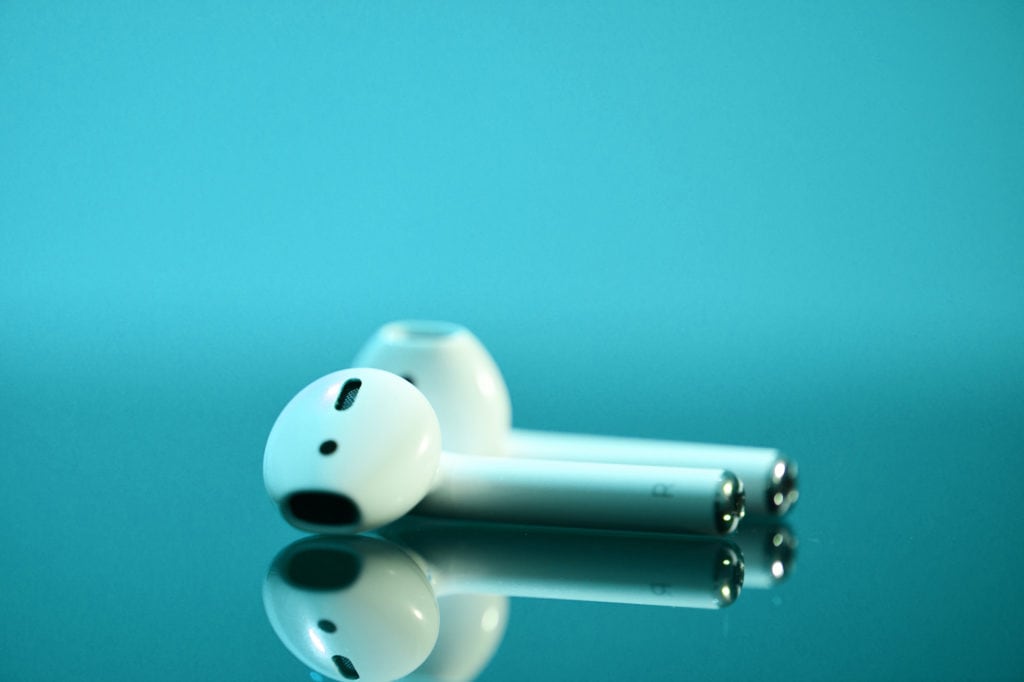
The company also introduced a new mobile payment system called Apple Pay. Users can link credit, debit, and some gift cards to their Apple Wallet and pay securely using Apple Pay.
2016: AirPods Become a Status Symbol
The introduction of the iPhone 7 was also a bittersweet goodbye to the headphone jack. As one could imagine, the average consumer was not pleased. How could they listen to music without plugging in their EarPods?
Leave it to Apple to have a solution ready for release. A few months after launching the jackless iPhone 7, the company revealed its latest innovation—AirPods. AirPods are wireless headphones that easily sync with Apple devices.
AirPods didn't receive a warm welcome at first. Many reviewers critiqued their bulky design and didn't feel anyone would shell out $150 for a pair. However, consumers proved these naysayers wrong, and Apple sold over 12.5 million AirPods by the end of 2018.
2017: iPhone X Shakes up the Mobile Phone Market
After keeping the same basic style and look, Tim Cook decided it was time to reinvent the iPhone for its tenth anniversary. He removed the home button, improved the selfie camera, added Face ID, and introduced his loyal Apple audience to the iPhone X. It even had a more modern price tag—$999. However, devoted iPhone users willingly paid this lofty amount without hesitation.
2019: Credit Becomes the Focus
The high cost of Apple products means many customers put their purchases on a credit card. It only made sense for the company to introduce its own credit card. Apple partnered with Goldman Sachs and MasterCard to create a brand-new, one-of-a-kind card.
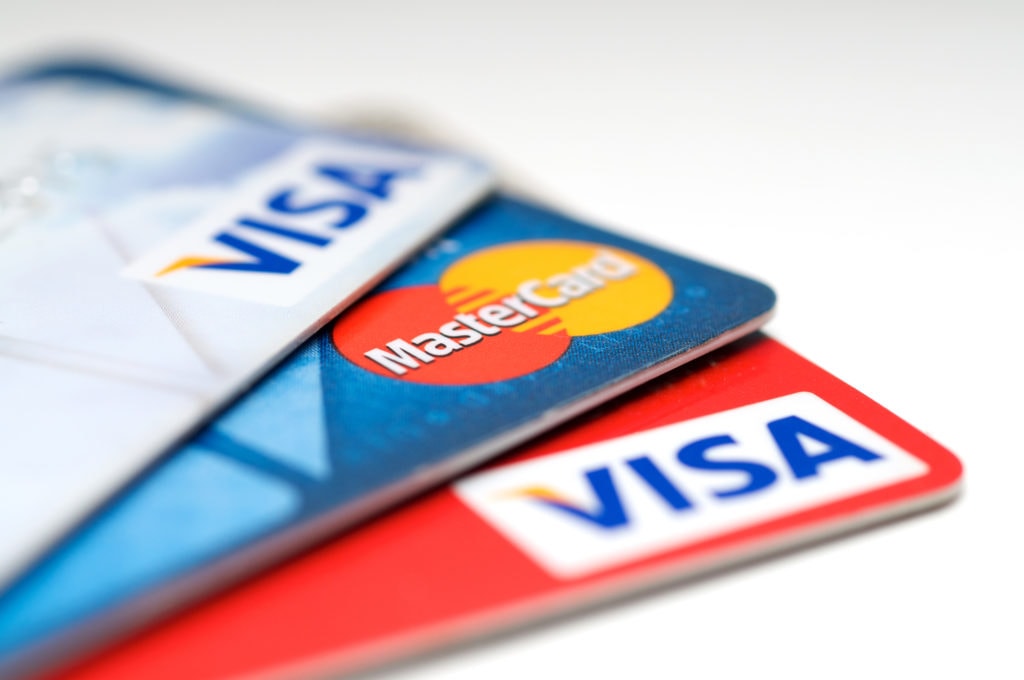
Of course, Apple made sure its credit card was both functional and aseptically pleasing. The titanium card doesn't have any numbers printed on it, which Apple claims helps protect carriers from identity theft. It's also the perfect addition to Apple Pay.
2020: iPhone 12 and a Smaller Box
Many companies wish 2020 would disappear forever. But Apple kept moving forward with product launches and other announcements. In October, Cook announced the new iPhone 12. This model features 5G connectivity, and it also introduces MagSafe, a magnetic connection that improves charging. The iPhone 12 is also the most expensive iteration to date.
There is also some harsh criticism surrounding the iPhone 12—namely, regarding Cook's decision to remove the charging cable from the box. As stated by Mashable, "Apple removes power adapters and headphones from box, calls it progress." Lisa Jackson, Apple's vice president of environmental policy and social initiatives, believes "a smaller, lighter iPhone box" will allow Apple to fit "up to 70 percent more products on a shipping pallet."
A Record-Setting Valuation
Even as other companies began closing their doors in 2020, sales continued to skyrocket for Apple. As CNBC reports, "Apple becomes the first U.S. company to reach a $2 trillion market cap." Although Amazon, Microsoft, and Alphabet have all passed the $1 trillion market cap, none of them are close to catching up with Apple.
"Apple shares are up about 60% year to date, pushing through the coronavirus pandemic that has battered many companies. In the past year, shares have risen more than 120%."
Even with widespread retail closures, Apple managed to protect profits by allowing many employees to work-from-home. The company also saw strong online sales.
How'd Apple do during the strangest year ever? They made $111 billion in the fourth quarter. How about 'dem apples?
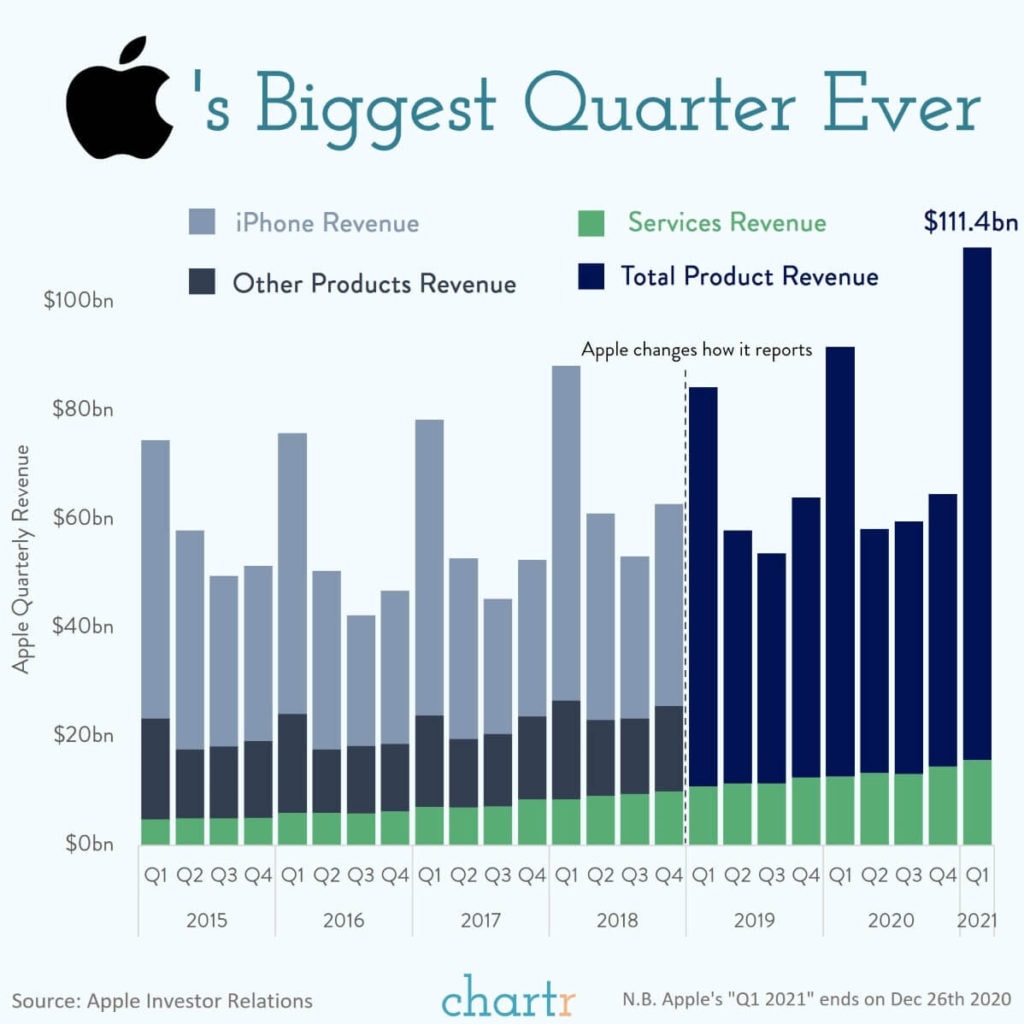
2021: Apps Break Records
The pandemic was kind to Apple as users in lockdown downloaded apps to keep themselves entertained and connected. According to a report from Sensor Tower, consumers in the US shelled out $138 on average for iPhone apps in 2020. That marks a 38% bump over 2019. But even with the world opening up, projections show that number climbing to $180 on average per user.
While the company's app sales boom, it's aiming to decrease its energy footprint at corporate. How? By using 85 Tesla lithium-ion “megapacks” to power its Cupertino headquarters. Wind and sun, it seems, are as good for Apples as they are for apples.
What Else Do You Want to Know About Apple?
Apple's milestones are impressive. But learning about its history may have left you with more questions than before. Here are the answers to some of the most commonly asked questions about Apple:
What Is Apple's Full Company Name?
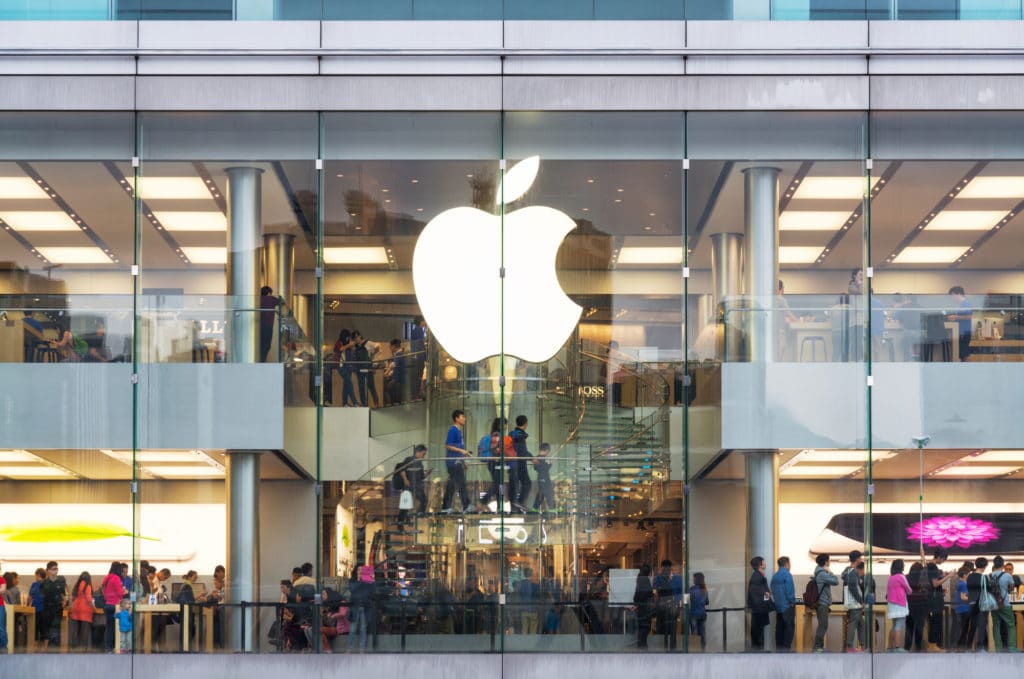
When Apple first launched, Jobs and Woz called it Apple Computer Company. In 1977, it became Apple Computer, Inc., and that name stuck until 2007. Since the company sells much more than just computers these days, Jobs officially changed its name to Apple Inc.
Is Apple a Corporation?
Yes! And not only is Apple a corporation, but it's a multinational corporation. The company incorporated on January 3, 1977, with Steve Jobs and Stephen Wozniak listed as co-founders. However, many people don't realize that Ronald Wayne was the third Apple founder. Even though he originally invested in the company, Wayne sold his share back to Apple for only $800.
How Much Does an Apple CEO Make?
Steve Jobs was Apple's most notable CEO. The company paid him a meager $1 salary (yes, ONE dollar), but he also owned over 5.5 million Apple shares. Those stocks are what made him a very rich man. When he passed, Jobs' net worth was $10.2 billion. (Check out some of the most inspiring quotes from Steve Jobs.)
The current Apple CEO, Tim Cook, received a $3 million salary in 2019. However, Business Insider shares how "Apple is giving CEO Tim Cook over $38 million in stock to stay with the company through 2025." According to the news source, "Should he meet certain goals tied to his performance as CEO, Cook would receive another 333,987 stock units—and they could vest at up to 200% of their value."
What Companies Does Apple Own?
Apple has a reputation for acquiring smaller tech companies the brand can use to expand its product line. While the list of companies owned by Apple is quite lengthy, there are a few standout brands to note, including:
- NeXT Computer - purchased in 1996 for $400M
- PA Semi - purchased in 2008 for $356M
- Anobit Technologies - purchased in 2011 for $500M
- AuthenTec - purchased in 2012 for $356M
- PrimeSense - purchased in 2013 for $360M
- Beats Electronics - purchased in 2014 for $3B
- Shazam - purchased in 2017 for $400M
- Texture - purchased in 2018 for $458M
- Dialog Semiconductor - purchased in 2018 for $600M
- Intel's smartphone modem business - purchased in 2019 for $1B
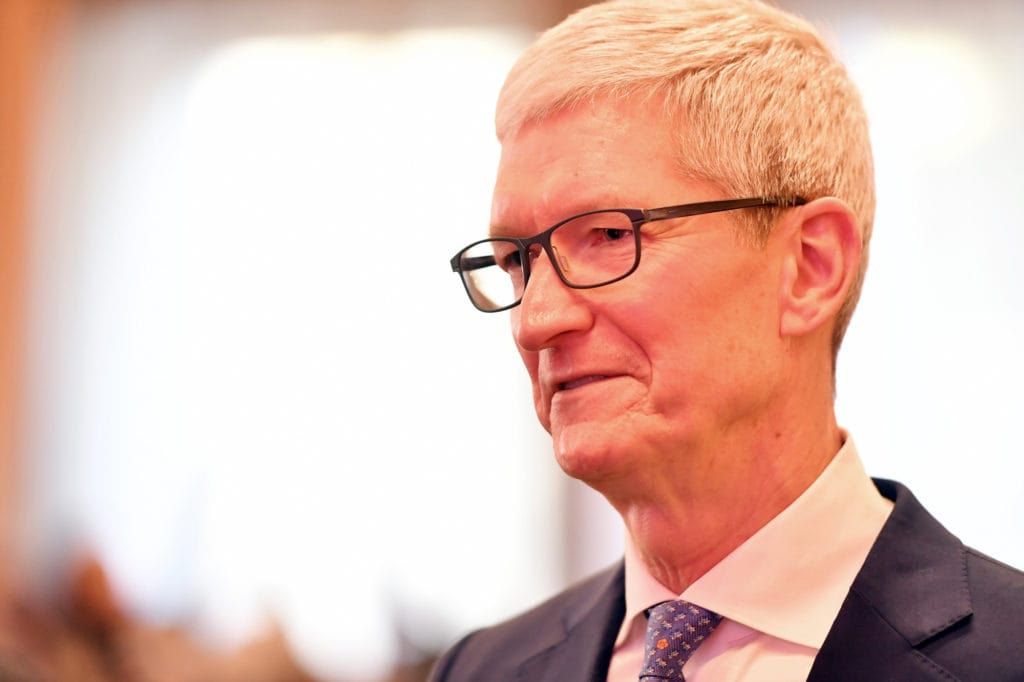
All of Apple's acquisitions reflect the company's strategy evolution. The Beats Electronics buyout, for instance, happened when the company wanted to focus on Apple Music. Acquiring AuthenTec and PrimeSense helped Apple create the technology needed to enable fingerprint-enabled payments and facial recognition, respectively. Apple subsidiaries are crucial to the company's success, and consumers should expect to see more in the future.
What Would $1000 Invested in Apple in 1997 Be Worth Today?
In 1997, it was possible to buy Apple stock for as low as $3.56 a share. Fast forward to August 2020, and Apple shares peaked at $515.14. Your modest $1,000 investment in 1997 would've sold for over $144,000. Not too shabby! And if you didn't buy back then, hindsight is always 20/20.
Can Apple Stock Reach $1000?
There's no reason why Apple stock couldn't reach $1,000 in the future. As the company continues to release more innovative products and services, consumer demand will only increase. Every new product seems to surpass the previous one. Unless there is another stock split on the horizon, it may not be long before shares reach a new record high.
Will Apple Stock Split Again?
Since Apple's IPO, the company's stock has split a total of five times. The most recent split was on August 28, 2020, when stocks split on a 4-for-1 basis. Will it happen again? If we follow past Apple stock trends, it will most likely be several years before the company announces another one. But only time will tell.
Does Bill Gates Have Stock in Apple?
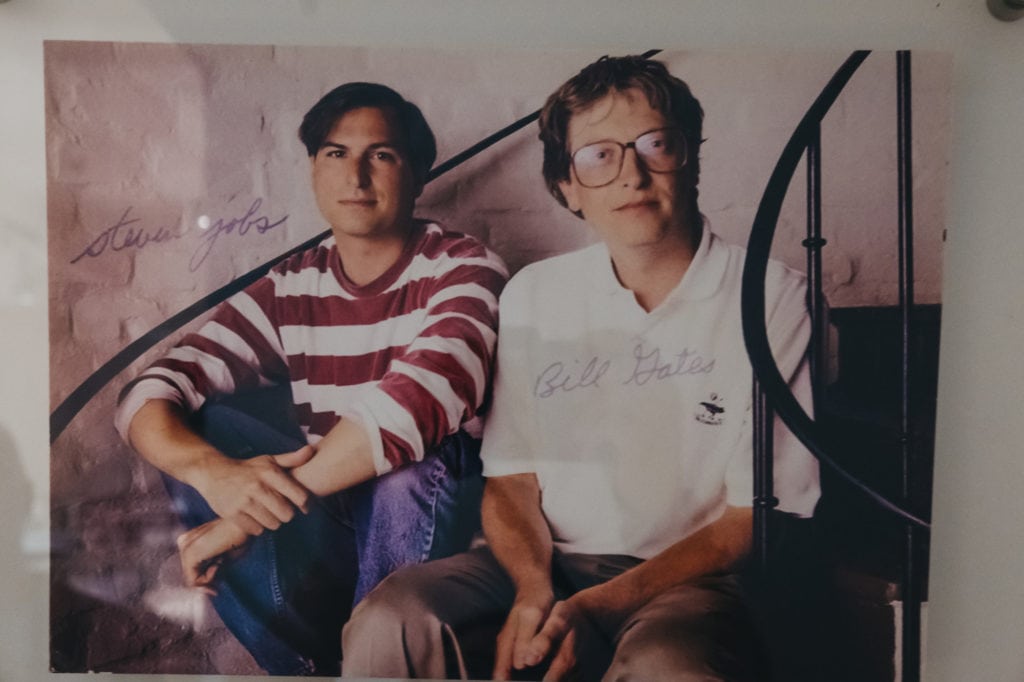
Microsoft is a direct Apple competitor, which you can learn about in this Steve Jobs vs. Bill Gates Epic Rap Battle (NSFW disclaimer). However, Bill Gates is a smart investor and does own his fair share of the company.
Over half of Gates' investments are in a conglomerate holding company called Berkshire Hathaway. This company owns over 5% of Apple shares, and Gates owns about 2.25% of those. So, on paper, Gates indirectly owns about $1.8 billion of Apple shares. Crazy, huh?
What Will Apple Stock Be Worth in 5 Years?
Before you rush out and purchase Apple stock, you probably want to know what it will be worth in a few years. Although iPhone sales, a big money-maker for the company, have slowed recently, Apple still has a few other tricks up their gadgety sleeve. Consumers can expect to see new offerings, including wearables and services, from Apple in the near future.
As long as Apple continues to lead the way to technology innovations, shareholders can expect their stocks to increase in value. How much will stocks sell for in five years? Without a crystal ball or illegal insider trading info, you'll just have to wait and see for yourself.
How Do I Contact Apple Corporate?
There are several avenues available to contact Apple corporate, depending on your needs. According to the Apple Company profile, consumers requiring technical support should call AppleCare at 800–275–2273. The corporate address for Apple is One Apple Park Way, Cupertino, CA, 95014. You can also reach the corporate office at (408) 996–1010.
What's in Store for Apple?
The future seems bright for Apple. Although the company has seen more than its share of failures and criticism, it always bounces back higher than before. And as long as the current Apple company owner produces innovative products the world has never seen before, consumers will continue to buy at record rates.
As Steve Jobs once said, "Innovation distinguishes between a leader and a follower."
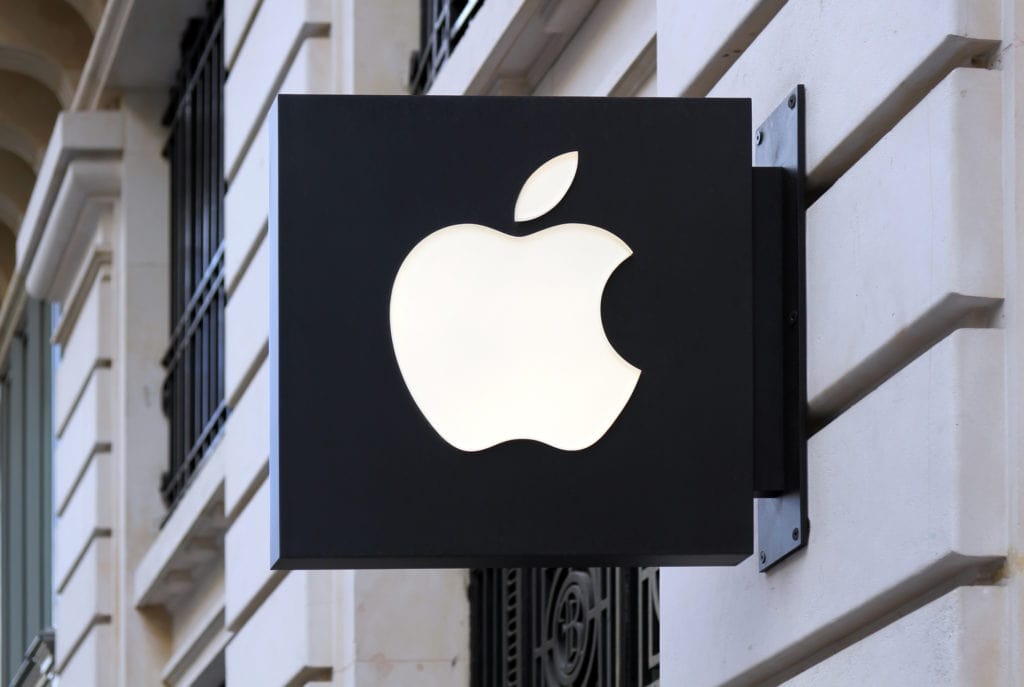
If you’re feeling the tug of entrepreneurship and want to know how to get started, we’d love to help you. That’s why we created this free video training series for you. Then, when you’re ready, come join us inside The One Percent, a give-first community of entrepreneurs who collaborate to build businesses, invest the profits, and create positive change in the world. We’ll be waiting for you!
